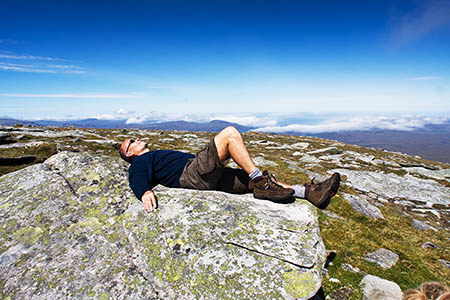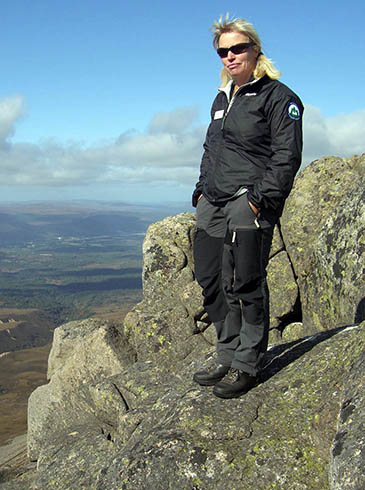A mountaineering expert has warned hillgoers of the dangers of overheating in the current exceptionally warm weather.
Heather Morning, mountain safety adviser for the Mountaineering Council of Scotland, said walkers and climbers are more accustomed to coping with the wet and cold, but extreme heat can also be lethal.
She said it is vital hillgoers keep hydrated while the hot spell lasts, and should also protect themselves from sunburn.
Ms Morning said: “Even experienced climbers can be caught out by the heat.
“Dehydration, heat exhaustion and heatstroke, which is potentially fatal, are all possibilities in this weather.
“Climbers and walkers should be aware of the signs to look out for in themselves and in their companions.”
She said because there can be little or no shade available in the mountains people should use sun cream and cover up to avoid prolonged exposure to the sun’s harmful UV rays.
Physical exertion increases the risk of both dehydration and heatstroke, as bodies produce more heat than they can get rid and sweating increases.
As people overheat they start to lose more fluid than they take in, and the body’s core temperature starts to rise and the levels of water and salt in the body begin to fall, which can cause a person to feel sick, feel faint and sweat heavily.
Her advice for anyone suffering heat exhaustion is that they should be taken quickly to a cool, shady place and given water to drink.
Excess clothing should be removed. They should begin to feel better within half an hour and have no long-term complications. Without treatment, they could develop heatstroke.
Heatstroke is more serious and occurs when the body can no longer cool itself and starts to overheat.
When the core temperature is above 40C the cells in the body start to break down; sweating ceases; heart and breathing rates increase and the person may have a fit, hallucinate or lose consciousness.
Ms Morning said heatstroke is a medical emergency requiring urgent treatment.
If away from access to roads and an ambulance, mountain rescue should be called and the person should be kept as cool as possible until help can arrive.
Move them to a cool area, remove excess clothing and try to cool them by fanning or bathing with cool water. If they are conscious, give them cool – not cold – water to drink.
She said prevention is better than cure. While out in the hills, walkers should carry and drink plenty of water, topping up from streams where safe to do so as they go.
Ms Morning said hillgoers should wear loose, light-coloured clothes and stay out of the sun as much as possible. “It’s best to take a rest when the midday sun is at its hottest – in the shade if possible – and you should consider whether you can pick a shorter or less strenuous route if the weather is particularly warm,” she added.
“Above all, listen to your body. Muscle cramps, fatigue, weakness, impaired concentration, confusion, light-headedness, nausea, laboured breathing, chest discomfort, and a rapid or erratic pulse can all be signs of trouble.”
The Mountain Weather Information Service is forecasting temperatures of 17C at 900m tomorrow in the uplands of Britain.
It said a week of very high temperatures and bright sunshine across the mountains is expected. Valley temperatures will approach or reach 30C with significant risk of sunburn and dehydration.
Ground conditions are widely extremely dry with associated high fire risk. There is a significant threat of widespread thunder late next week.


Paul B
18 July 2013Well said Heather, sound advice.
I have had Heatstroke and its no laughing matter and once you have suffered you become more susceptible.
Start early, keep the sun off your head with a hat or covering and take it easy. Think Arab!
Enjoy the sunshine.
Gordon
20 July 2013Wear a sun hat or even carry a collapsible brolly to get some shade and carry plenty of water along with some Dioralyte sachets in your first aid pack ready to mix with it to combat symptoms... very effective and fast acting in replacing lost fluid along with glucose for energy and essential salts. More people go down with heat exhaustion when out on the high ground than hypothermia in the UK. I first heard about the sachets when I was a member of Rossendale & Pendle MRT in a training session given by the team's doctor who insisted we carry the sachets and rated them better than any high cost sports drink. I've seen first hand how effective they can be both in administering it to a casualty and when I've self administered when walking the El Camino pilgrim's route through Spain.